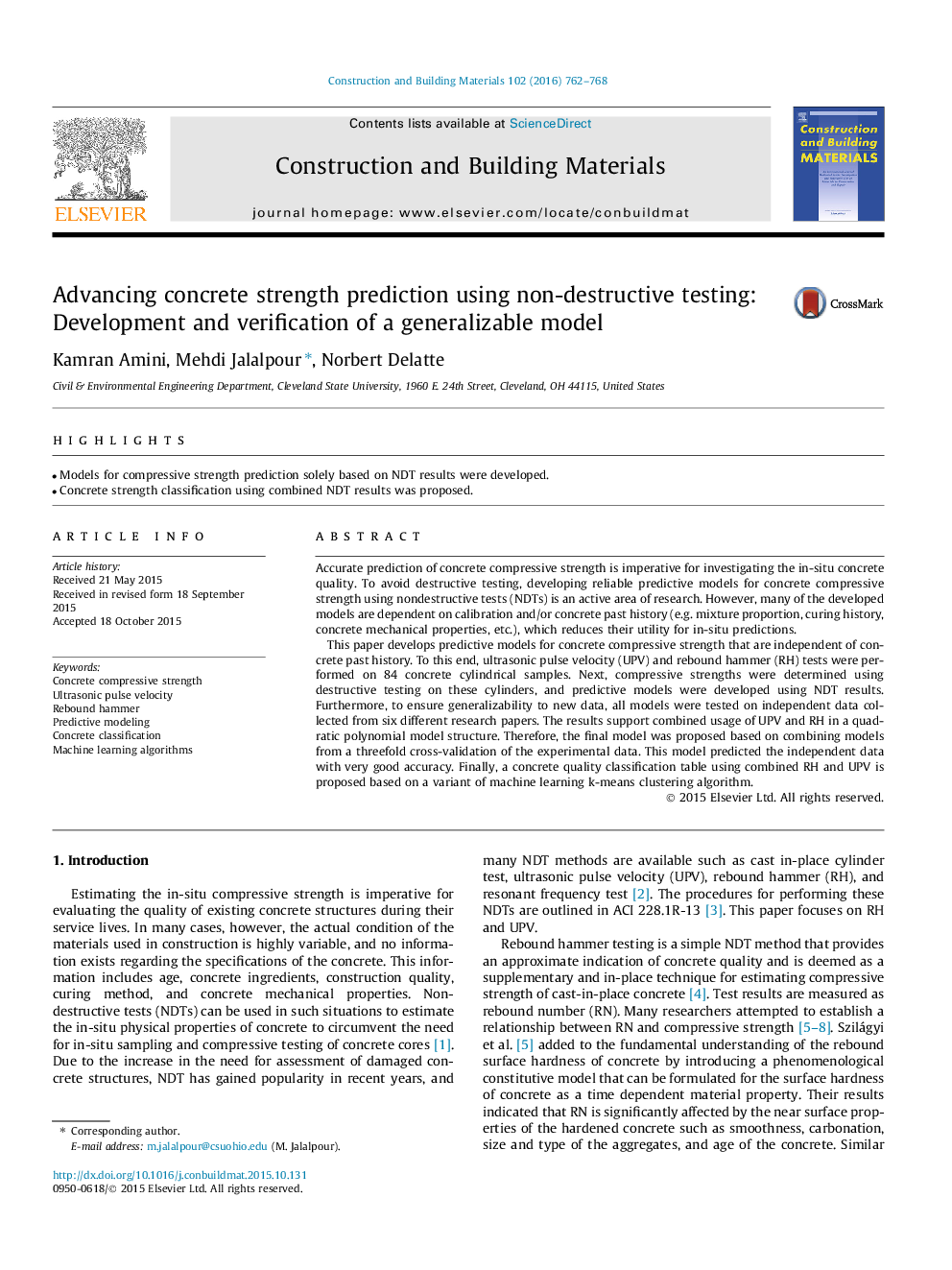| Article ID | Journal | Published Year | Pages | File Type |
|---|---|---|---|---|
| 10285102 | Construction and Building Materials | 2016 | 7 Pages |
Abstract
This paper develops predictive models for concrete compressive strength that are independent of concrete past history. To this end, ultrasonic pulse velocity (UPV) and rebound hammer (RH) tests were performed on 84 concrete cylindrical samples. Next, compressive strengths were determined using destructive testing on these cylinders, and predictive models were developed using NDT results. Furthermore, to ensure generalizability to new data, all models were tested on independent data collected from six different research papers. The results support combined usage of UPV and RH in a quadratic polynomial model structure. Therefore, the final model was proposed based on combining models from a threefold cross-validation of the experimental data. This model predicted the independent data with very good accuracy. Finally, a concrete quality classification table using combined RH and UPV is proposed based on a variant of machine learning k-means clustering algorithm.
Keywords
Related Topics
Physical Sciences and Engineering
Engineering
Civil and Structural Engineering
Authors
Kamran Amini, Mehdi Jalalpour, Norbert Delatte,
